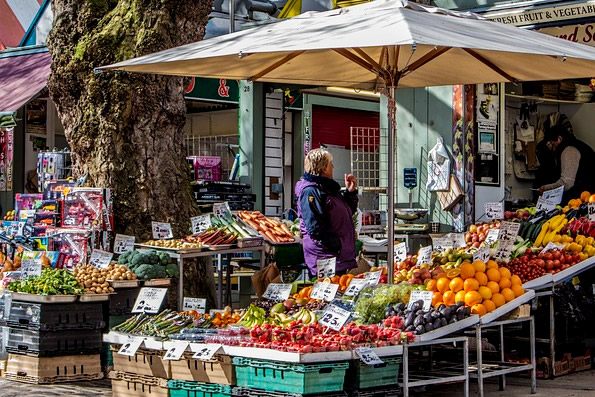今日から「How to make fruit and vegetables last longer -「野菜や果物を長持ちさせる方法」を読んでいます。

It’s a problem humans have been reckoning with since the first moment we had more food than we could eat in one go.
それは人類が一度に食べきれないほどの食料を手に入れたときから、ずっと考え続けてきた問題だ。
reckon「~を計算・起算する、思う、推測する、~とみなす、~と考える」。
When food is abundant, how do you store it to make it last?
食料が豊富にあるとき、どう保存すれば長持ちするのか?
The question has almost as many answers as there are foods.
この質問には、食品の数だけ答えがある。
The ancient Greeks washed figs in seawater and dried them in the hot sun, while in medieval China lemons and oranges were covered in waxes.
古代ギリシャではイチジクを海水で洗って炎天下で乾燥させ、中世の中国ではレモンやオレンジをロウで覆っていた。
In 15th Century Japan, vegetables were coated with soy milk to prevent moisture loss and extend their shelf-life.
15世紀の日本では、野菜の水分の損失を防ぎ、保存期間を延ばすために豆乳を塗っていた。
In 16th Century England, meanwhile, they were coated with lard.
一方16世紀のイギリスでは、それらはラードでコーティングされていた。
The problem of rotting apples and mouldering grain may have been a matter of season-to-season survival for our ancestors.
リンゴの腐敗やカビた穀物の問題は、私たちの祖先にとって、季節ごとに生き残るための問題だったかもしれない。
Today preventing food waste is no less of a challenge, though the stakes have changed somewhat.
今日、食品廃棄物を減らすことは、多少その利害関係が変わったとはいえ、同じ課題であり続けている。
The world’s greenhouse gas emissions from wasted food are about 10 times greater than those from the UK.
廃棄された食品による世界の温室効果ガス排出量は、英国の排出量の約10倍にもなる。
本当にこの食品廃棄の問題は、日本もひとごとではありませんよね。
かなり食品企業側も頑張っているのでしょうが、食べないまま廃棄となる量はかなりあるのでしょう。
昔はコンビニでバイトをすると、期限切れのお弁当などはもらえたそうですが、今はそれも禁じられているとのこと。
衛生管理に厳しいのは良い事なんですが、それでももったいないなあと思います。
世界中で取り組む必要があるこの問題について、早速読んでいきましょう!
理由は単純明快!「少ないコストでしっかり楽しく学べるから」。
私自身の経験(高機能でビックリ)をびっしり書いていますので、良かったら読んでみてください。
下のバナーからどうぞ!






